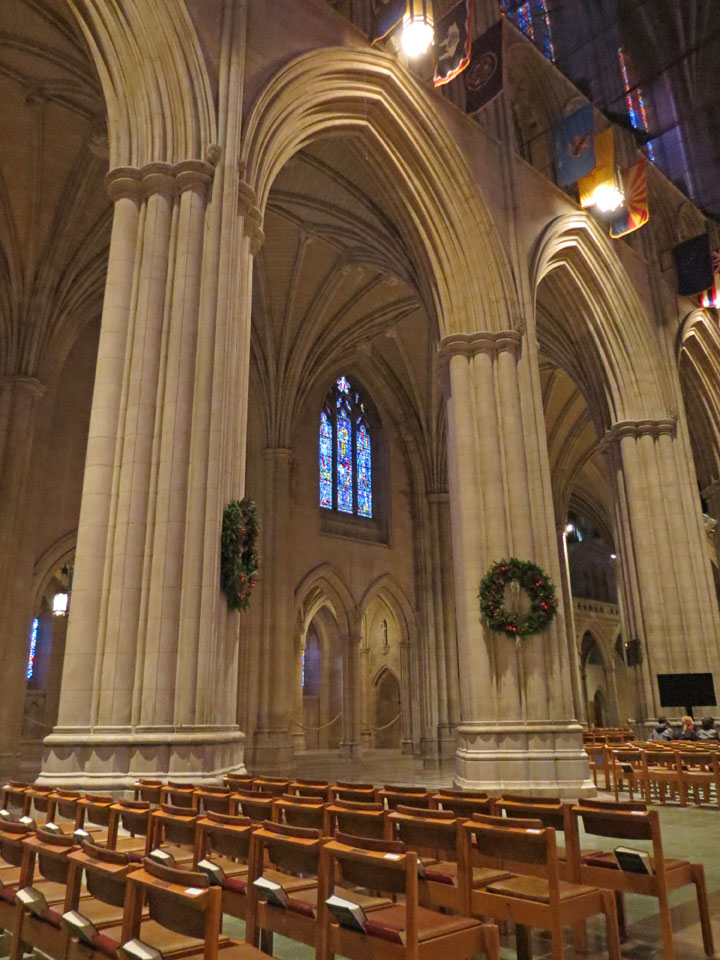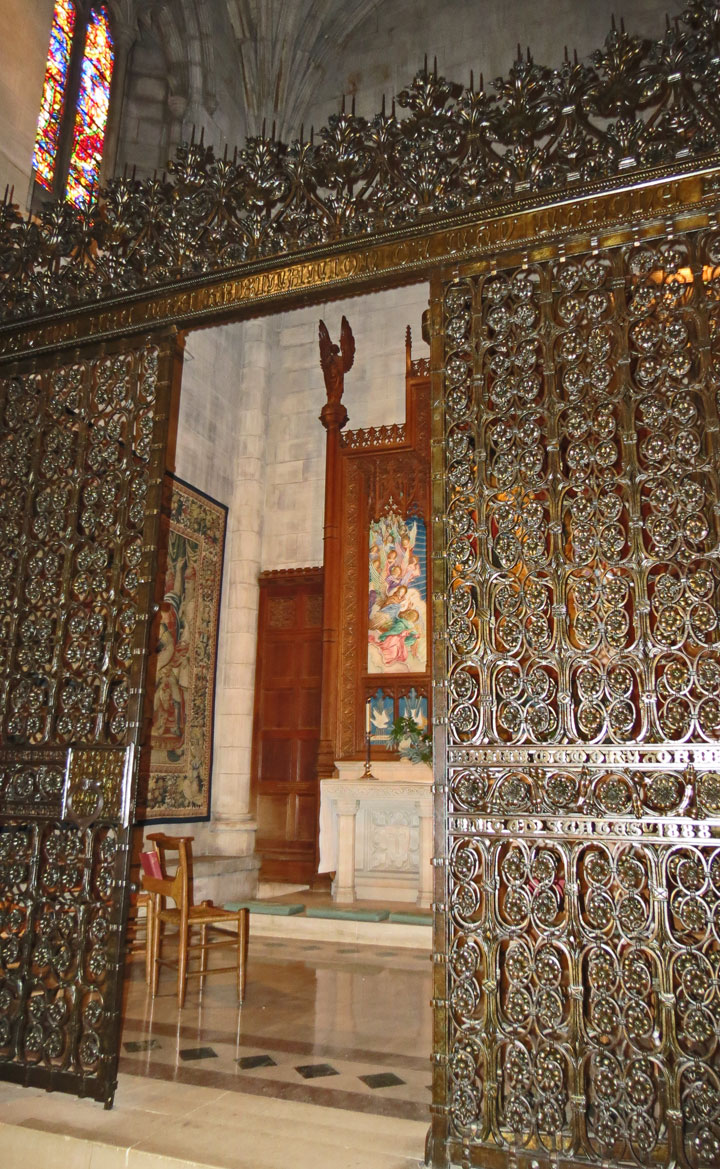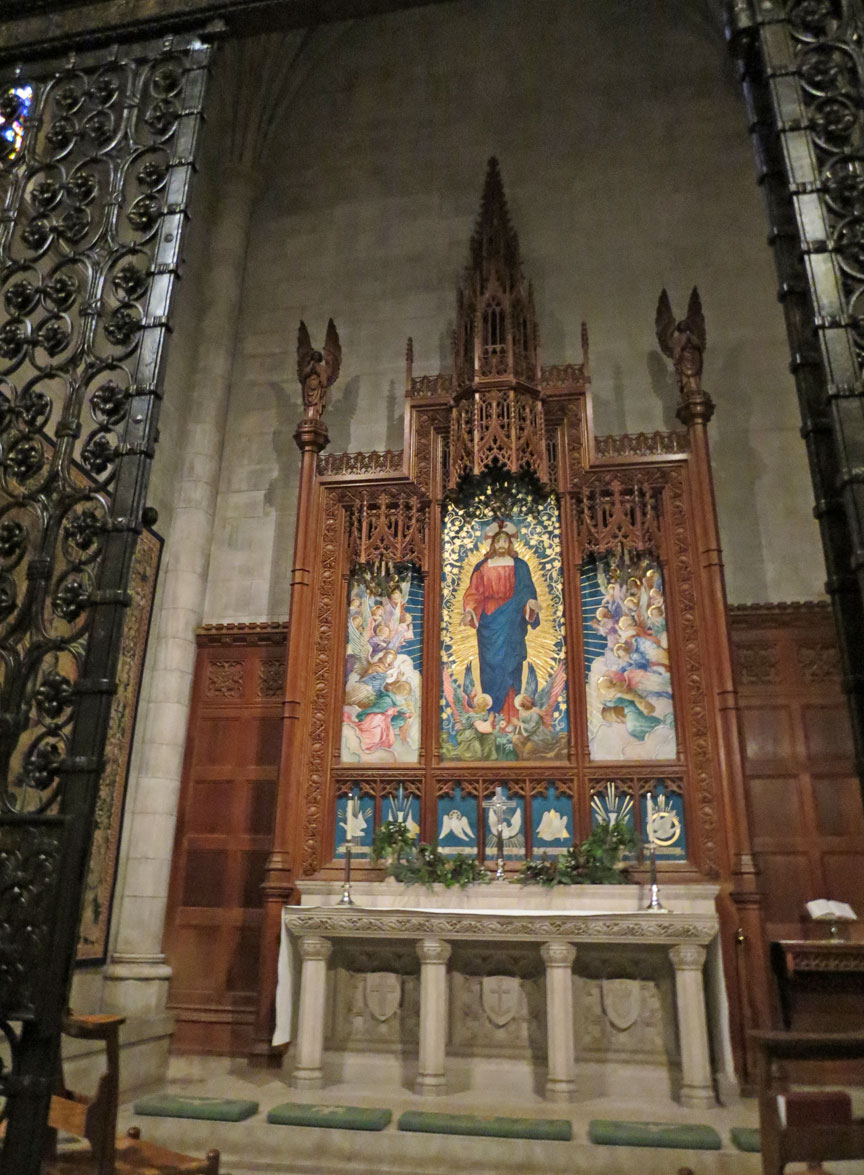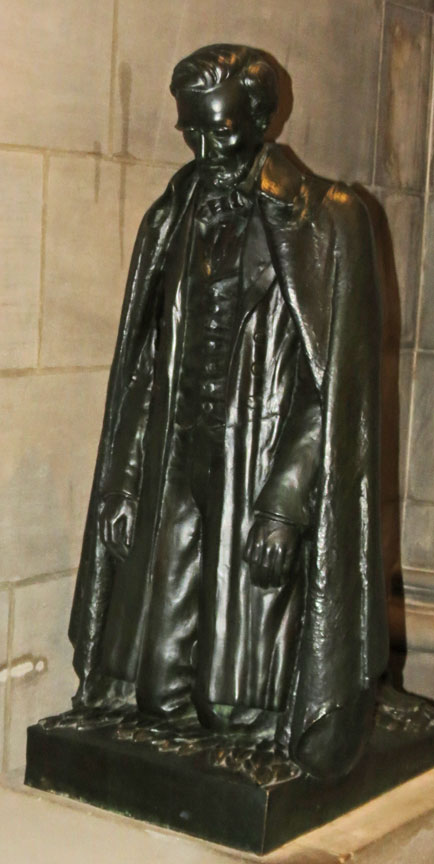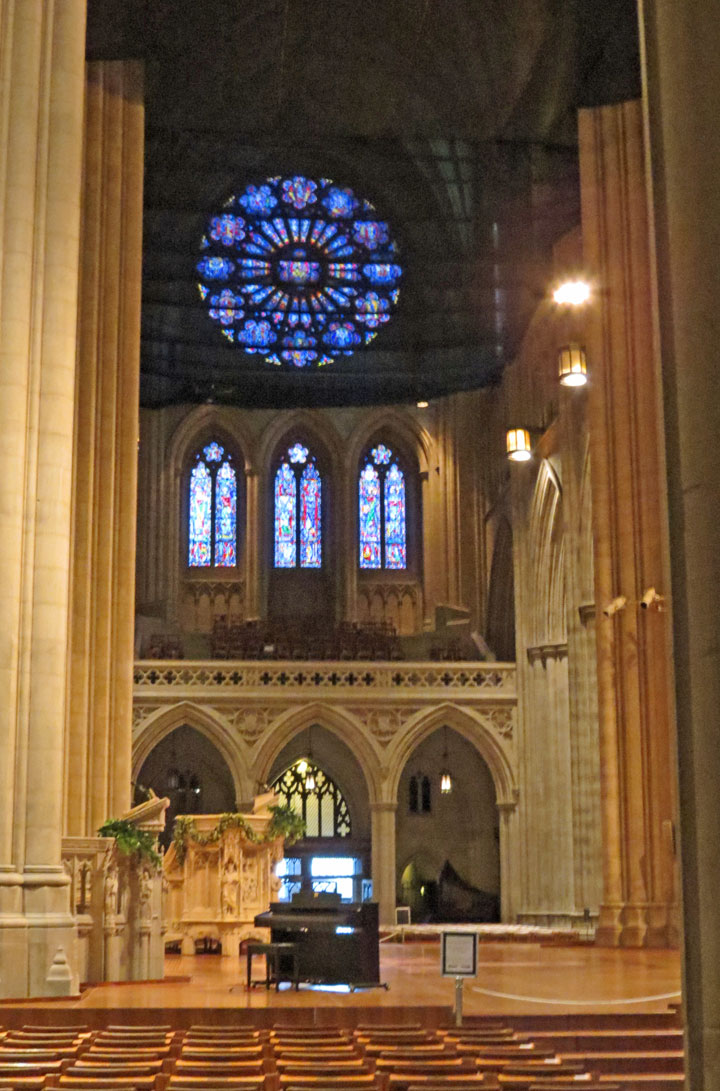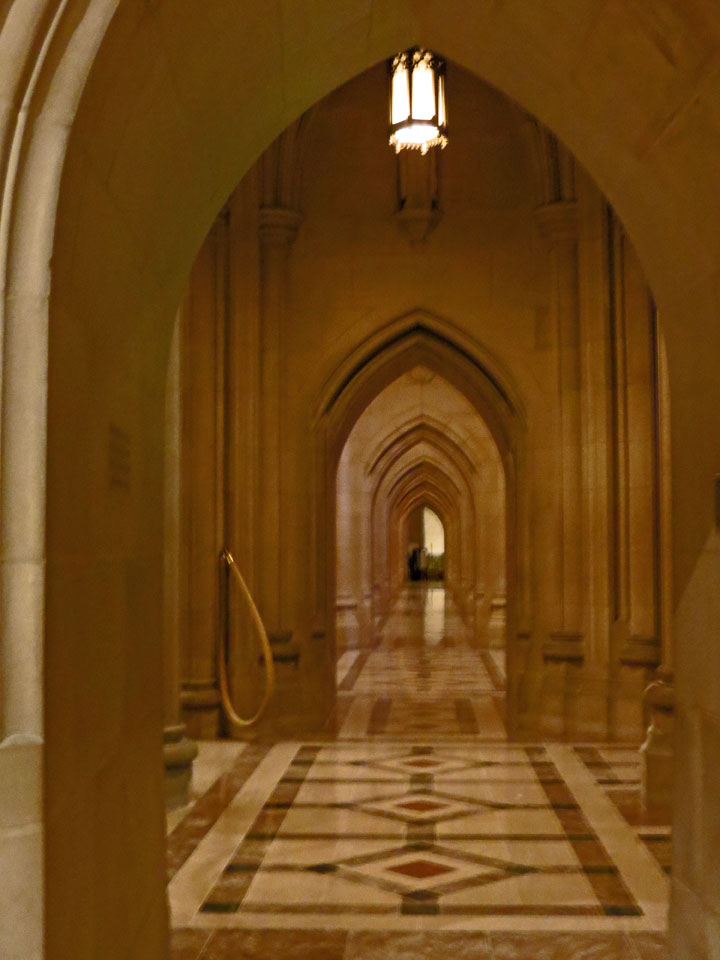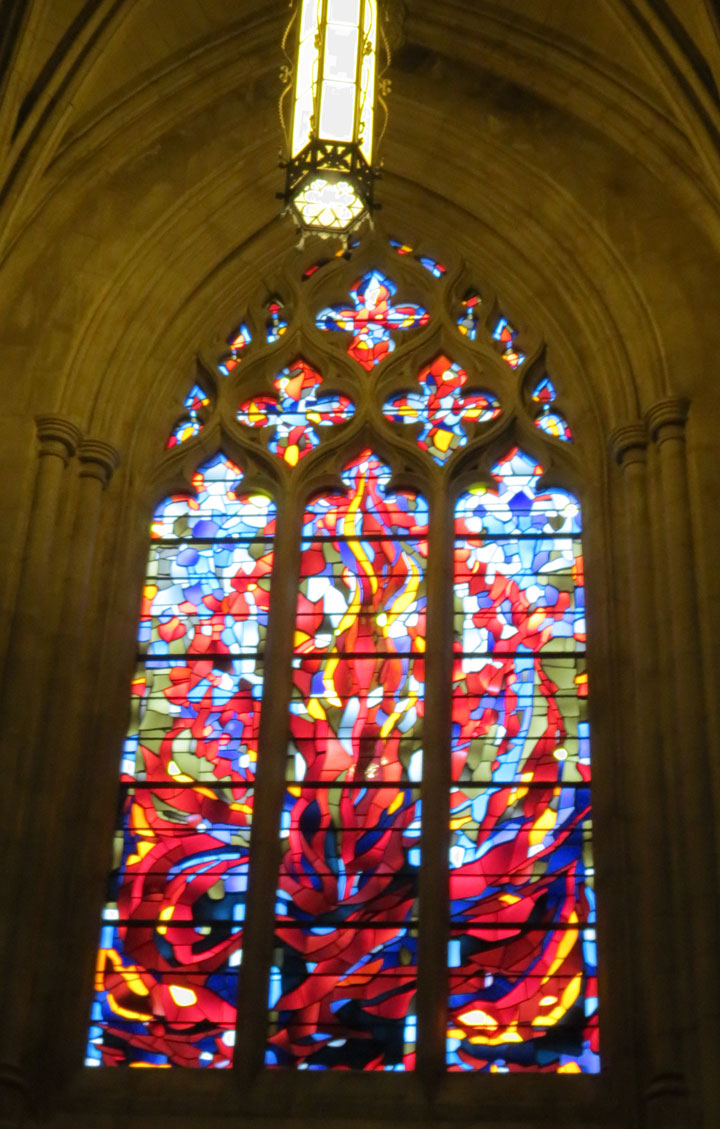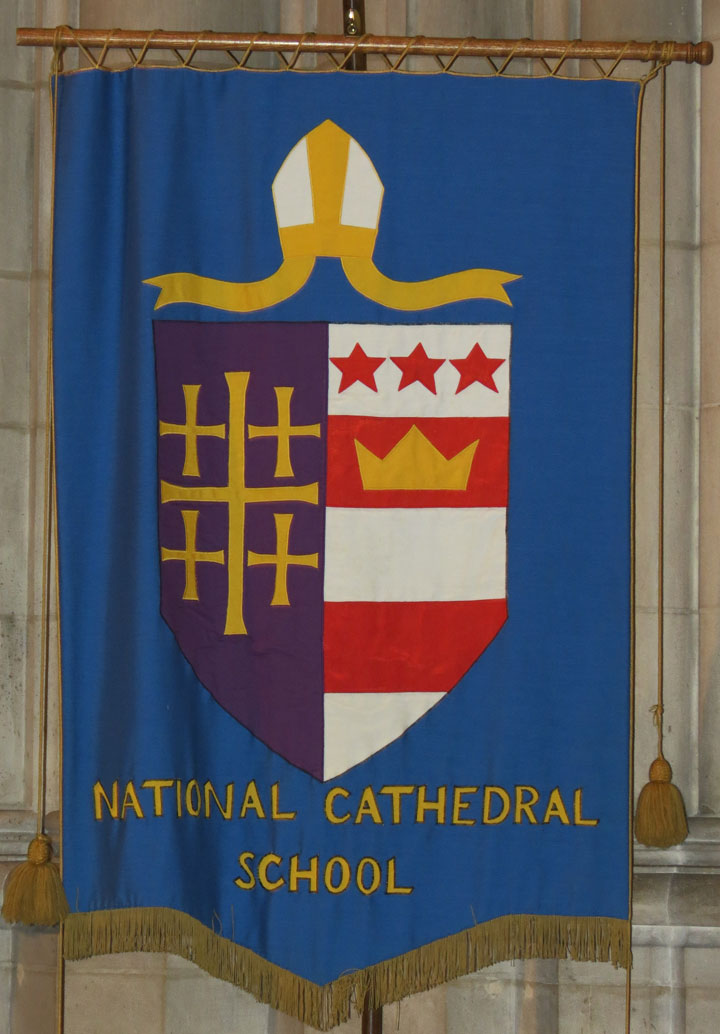

Washington National Cathedral
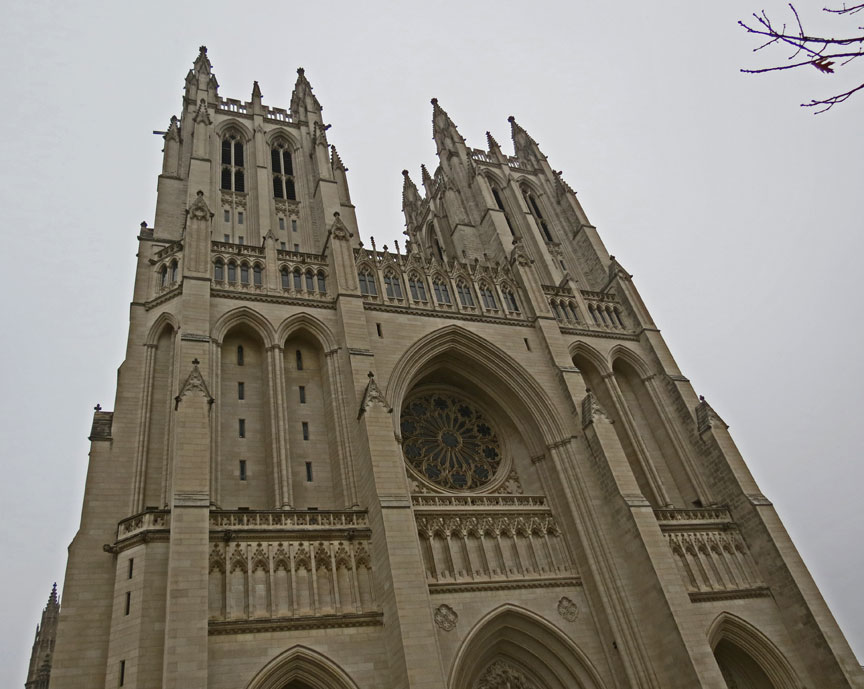
Washington National Cathedral
The Cathedral Church of Saint Peter and Saint Paul, popularly known as Washington National Cathedral, is a cathedral of the Episcopal Church located in Washington, D.C., the capital of the United States. Of neogothic design, it is the sixth-largest cathedral in the world, the second-largest in the United States, and the fourth-tallest structure in Washington, D.C. The cathedral is the seat of both the Presiding Bishop of the Episcopal Church, Katharine Jefferts Schori, and the Bishop of the Diocese of Washington, Mariann Edgar Budde. In 2009, nearly 400,000 visitors toured the structure. Average attendance at Sunday services in 2009 was 1,667, the highest of all domestic parishes in the Episcopal Church that year.

The Protestant Episcopal Cathedral Foundation, under the first seven Bishops of
Washington, erected the cathedral under a charter passed by the United States
Congress on January 6, 1893. Construction began on September 29, 1907, when the
foundation stone was laid in the presence of President Theodore Roosevelt and a
crowd of more than 20,000, and ended 83 years later when the last finial was
placed in the presence of President George H. W. Bush in 1990. Decorative work,
such as carvings and statuary, is ongoing as of 2011. The foundation operates
and funds the cathedral. In 2011, the cathedral was the recipient of $700,000 in
federal funds as part of the Save America's Treasures program.
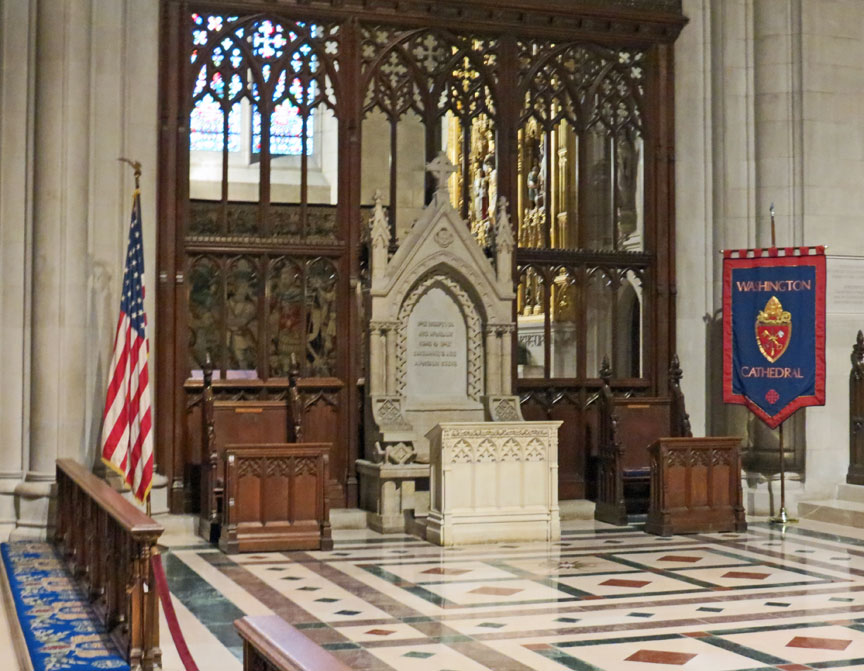
Bishops Chair
The cathedral stands at Massachusetts and Wisconsin avenues in the northwest quadrant of Washington. It is an associate member of the Washington Theological Consortium. It is listed on the National Register of Historic Places. In 2007, it was ranked third on the List of America's Favorite Architecture by the American Institute of Architects.
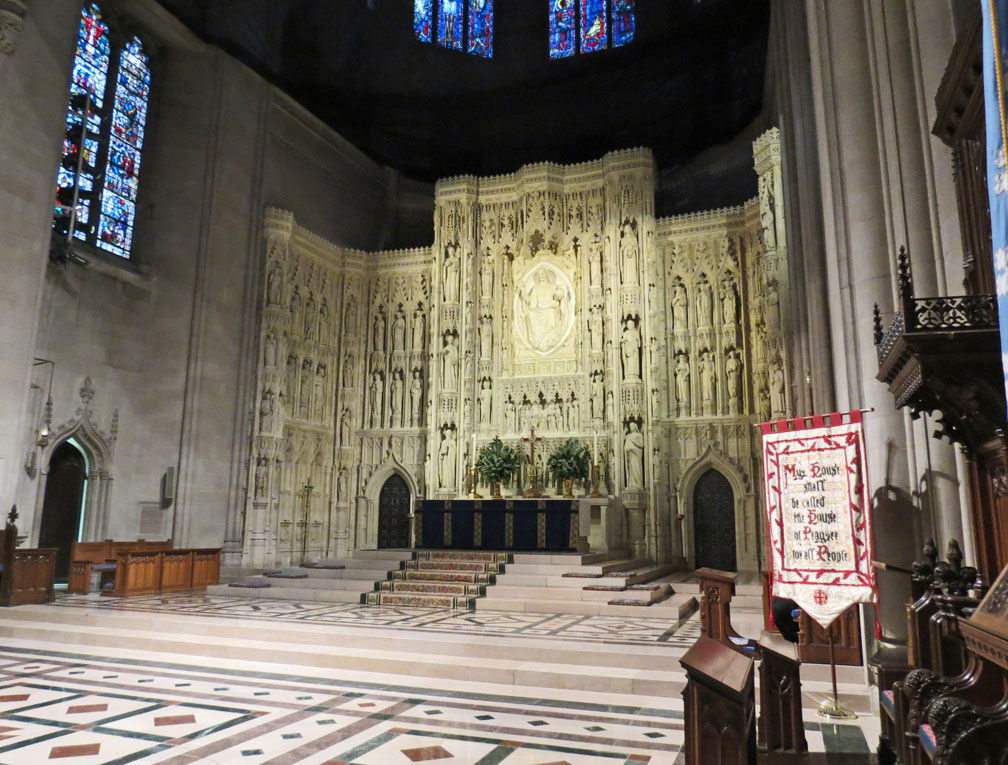
In 1792, Pierre L'Enfant's "Plan of the Federal City" set aside land for a
"great church for national purposes." The National Portrait Gallery now occupies
that site. In 1891, a meeting was held to renew plans for a national cathedral.
In 1893, the Protestant Episcopal Cathedral Foundation of the District of
Columbia was granted a charter from Congress to establish the cathedral. The
commanding site on Mount Saint Alban was chosen. Henry Yates Satterlee, first
Episcopal Bishop of the Diocese of Washington, chose George Frederick Bodley,
Britain's leading Anglican church architect, as the head architect. Henry
Vaughan was selected supervising architect.
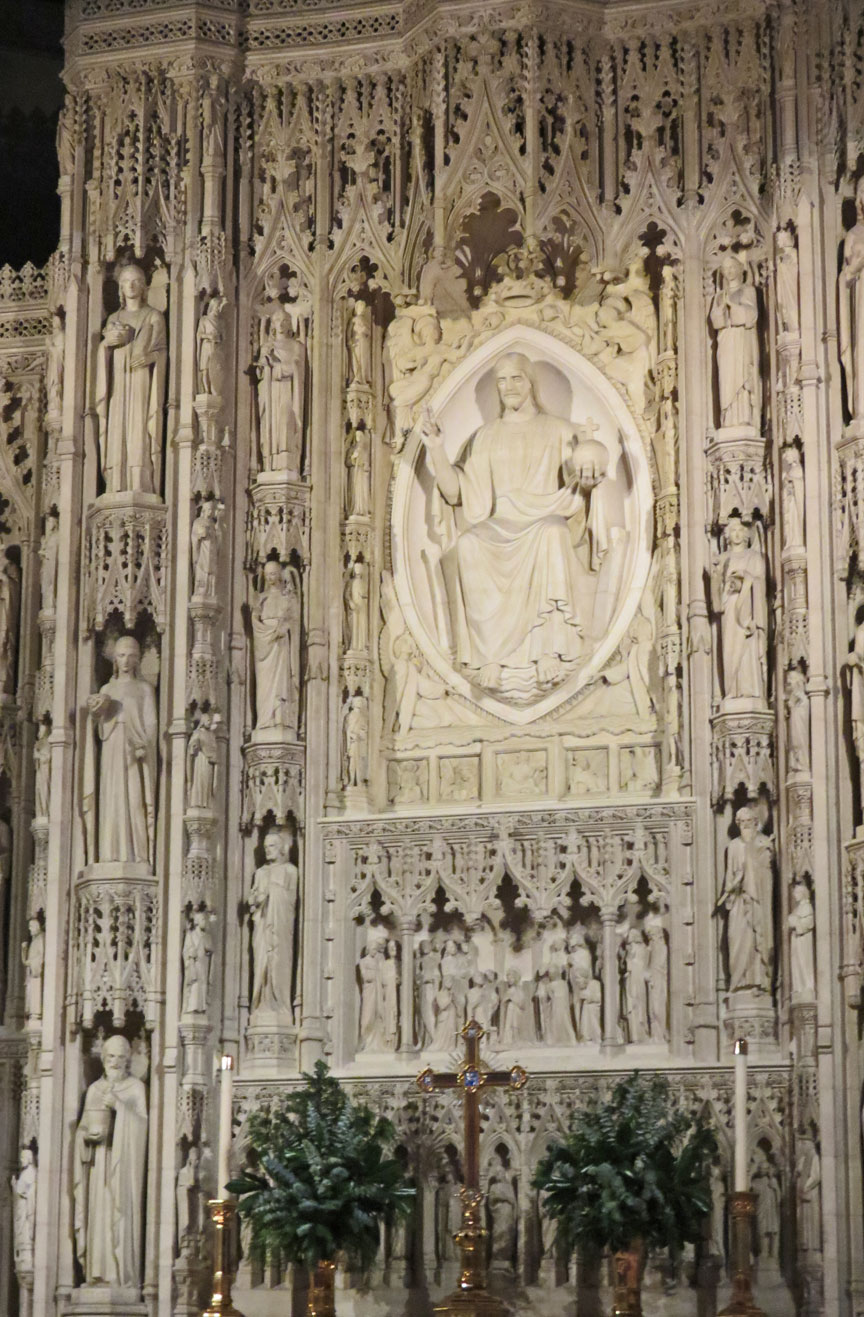
altar
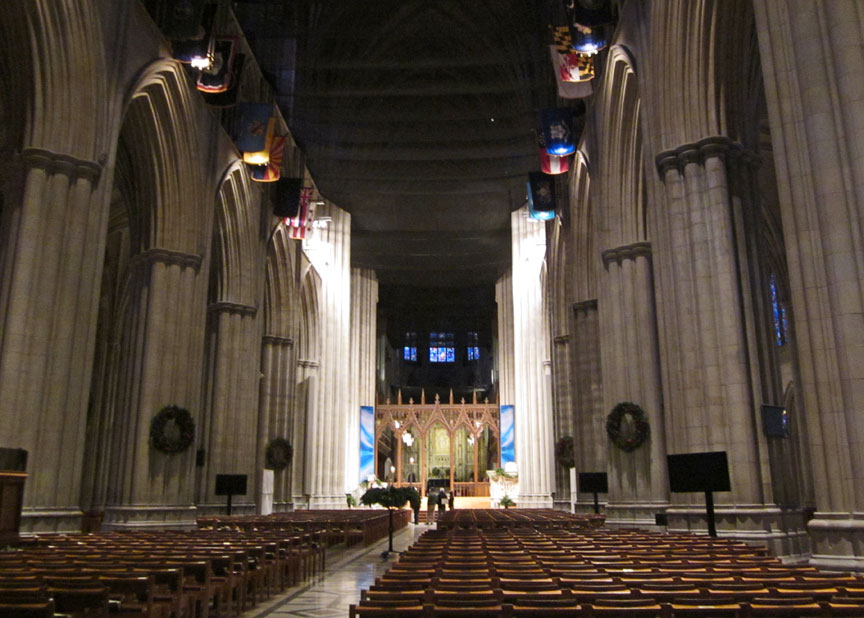
Construction started September 29, 1907, with a ceremonial address by President Theodore Roosevelt and the laying of the cornerstone. In 1912, Bethlehem Chapel opened for services in the unfinished cathedral, which have continued daily ever since. When construction of the cathedral resumed after a brief hiatus for World War I, both Bodley and Vaughan had died. Gen. John J. Pershing led fundraising efforts for the church after World War I. American architect Philip Hubert Frohman took over the design of the cathedral and was thenceforth designated the principal architect. Funding for the National Cathedral has come entirely from private sources. Maintenance and upkeep continue to rely entirely upon private support.
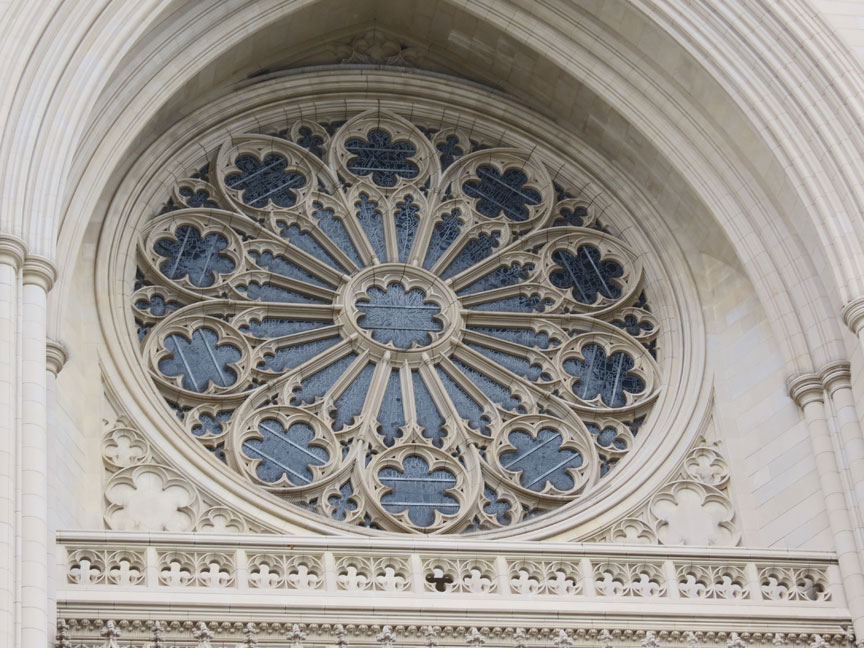
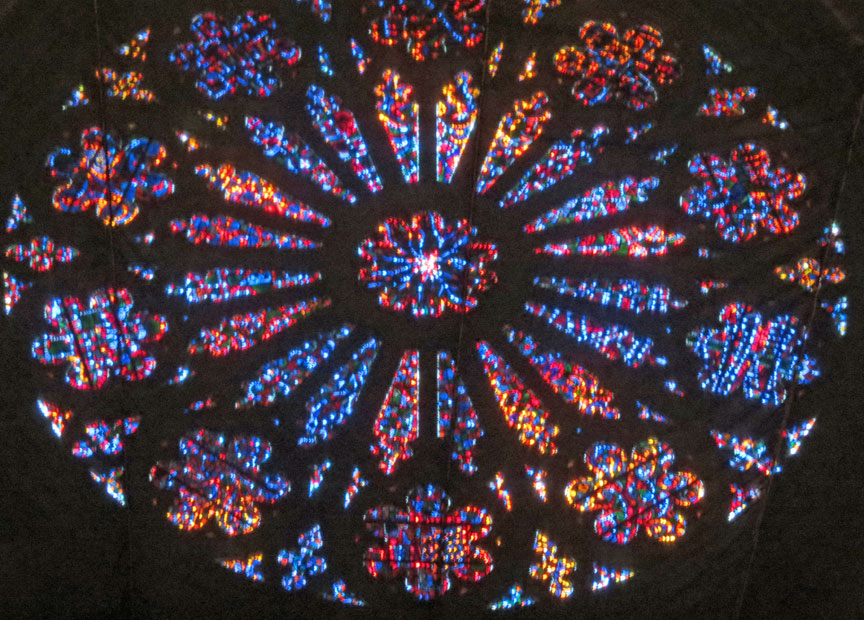
Congress has designated the Washington National Cathedral as the "National House
of Prayer". During World War II, monthly services were held there "on behalf of
a united people in a time of emergency". Before and since, the building has
hosted other major events, both religious and secular, that have drawn the
attention of the American people.
Text from Wikipedia

pulpit
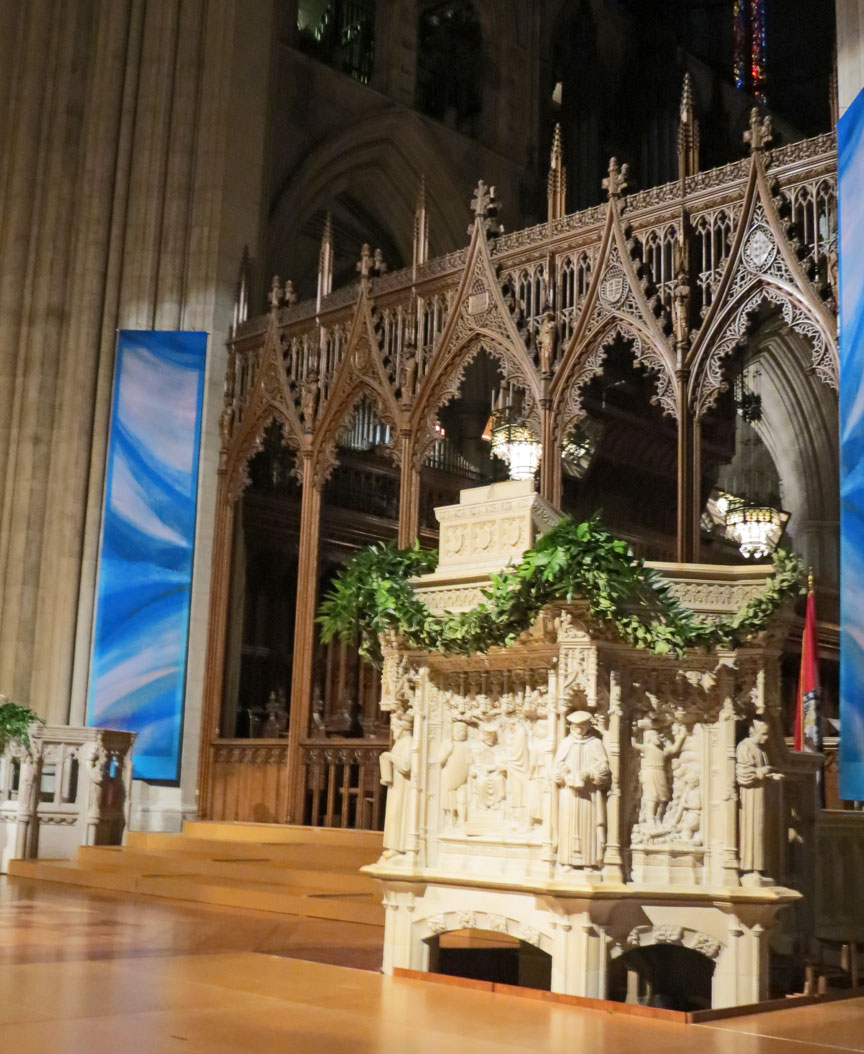
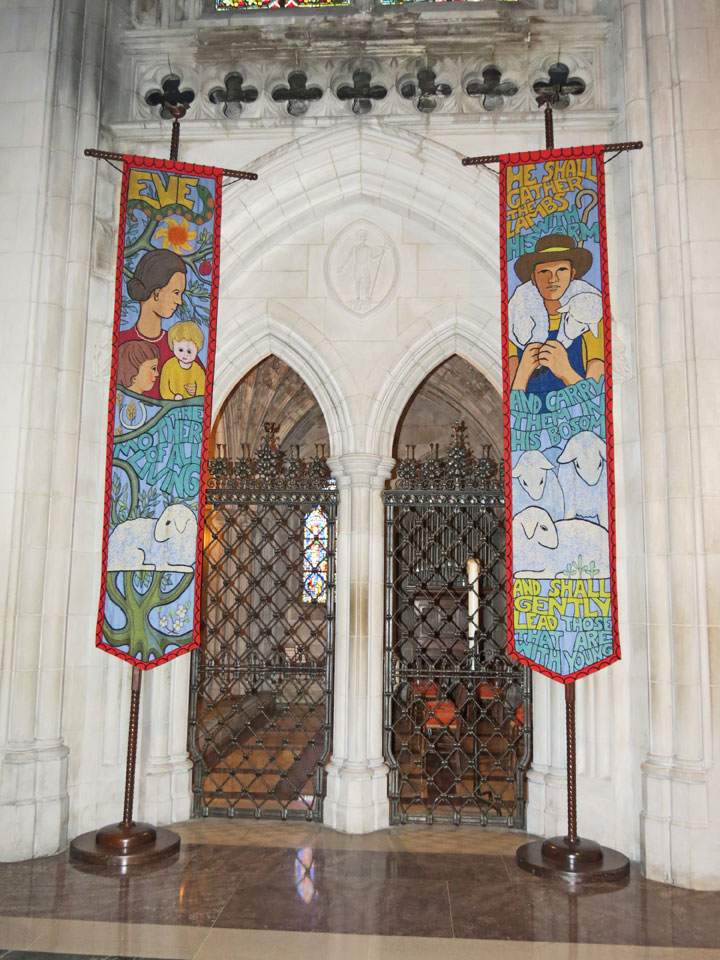
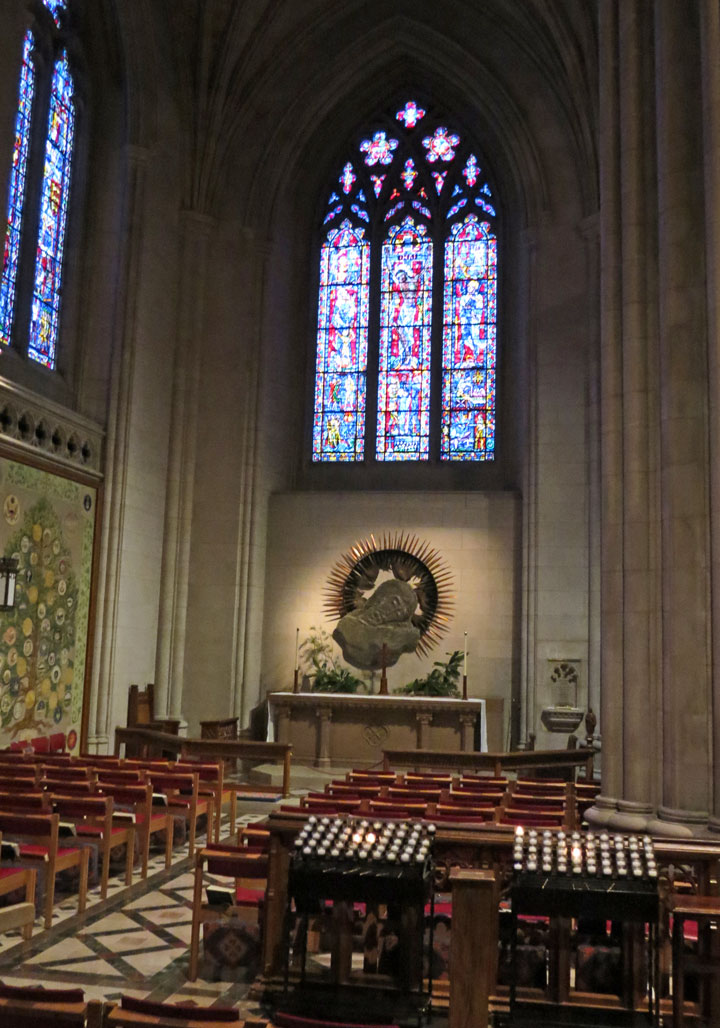
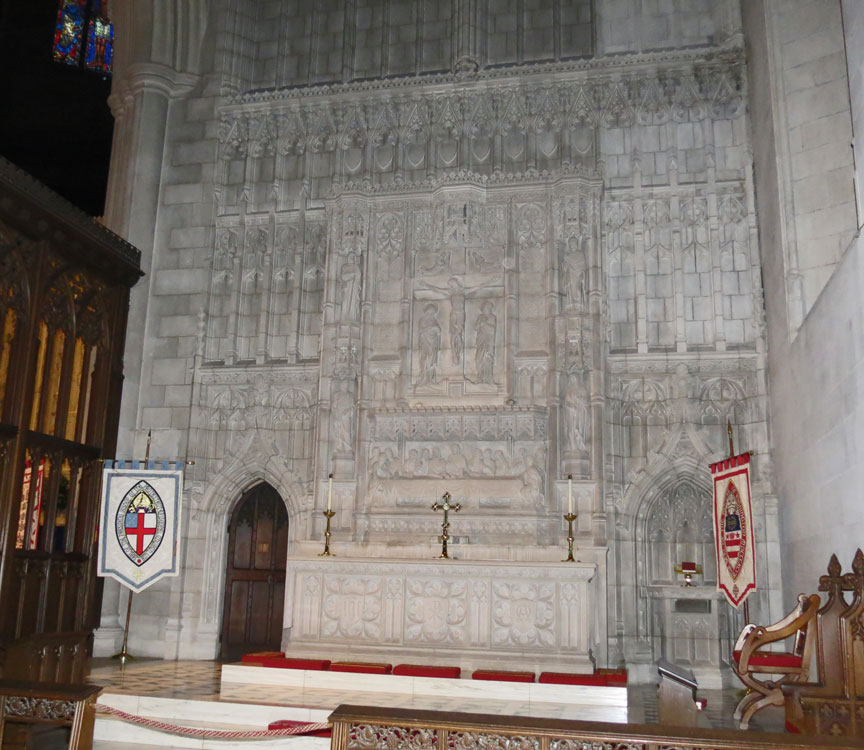

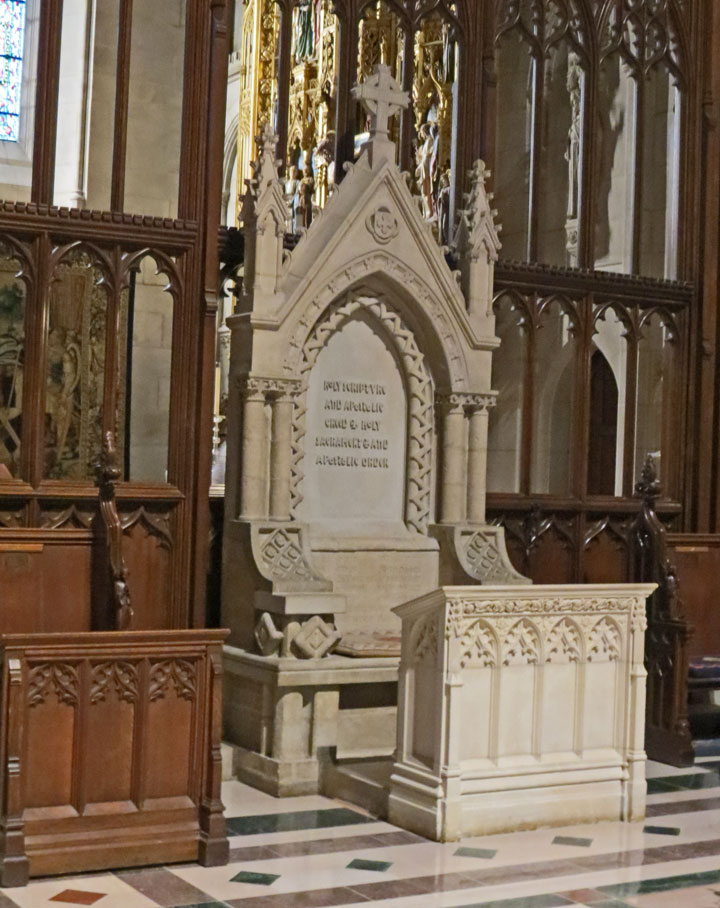
bishop's chair
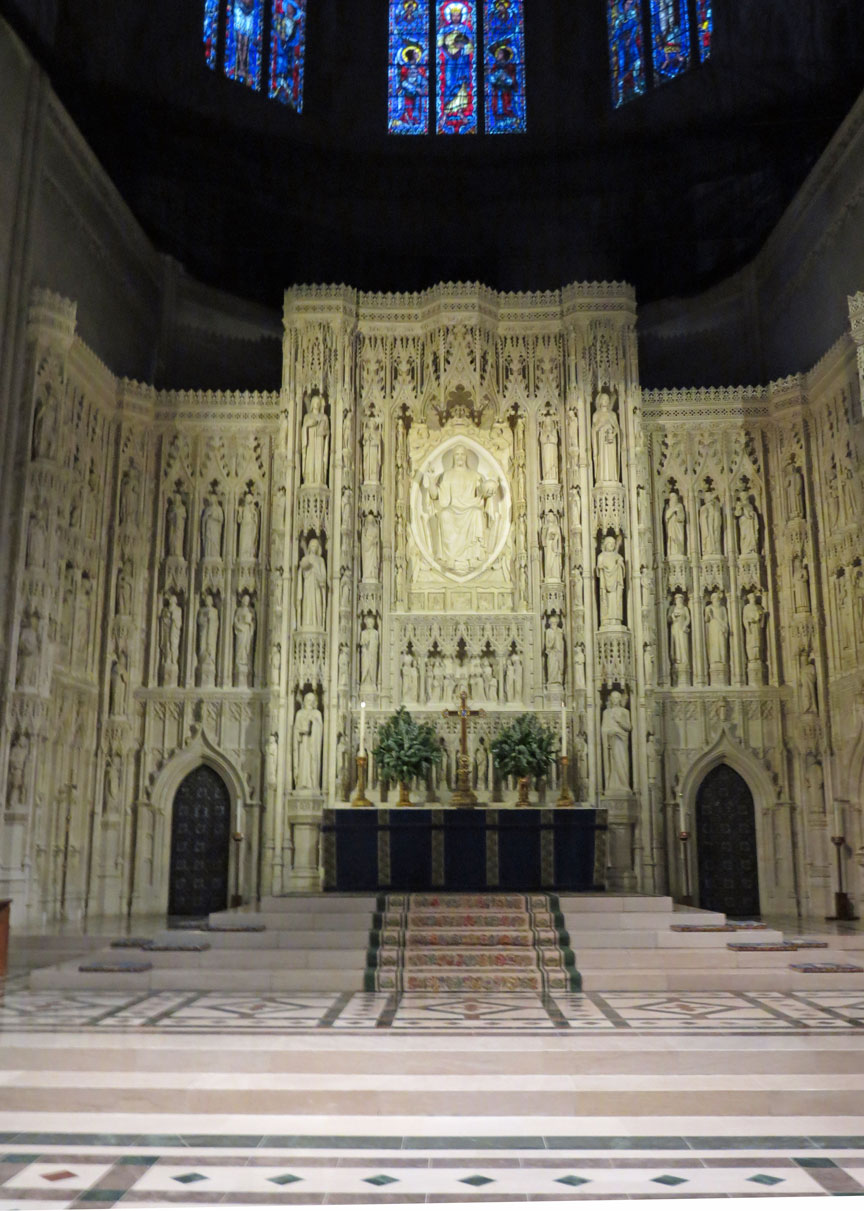
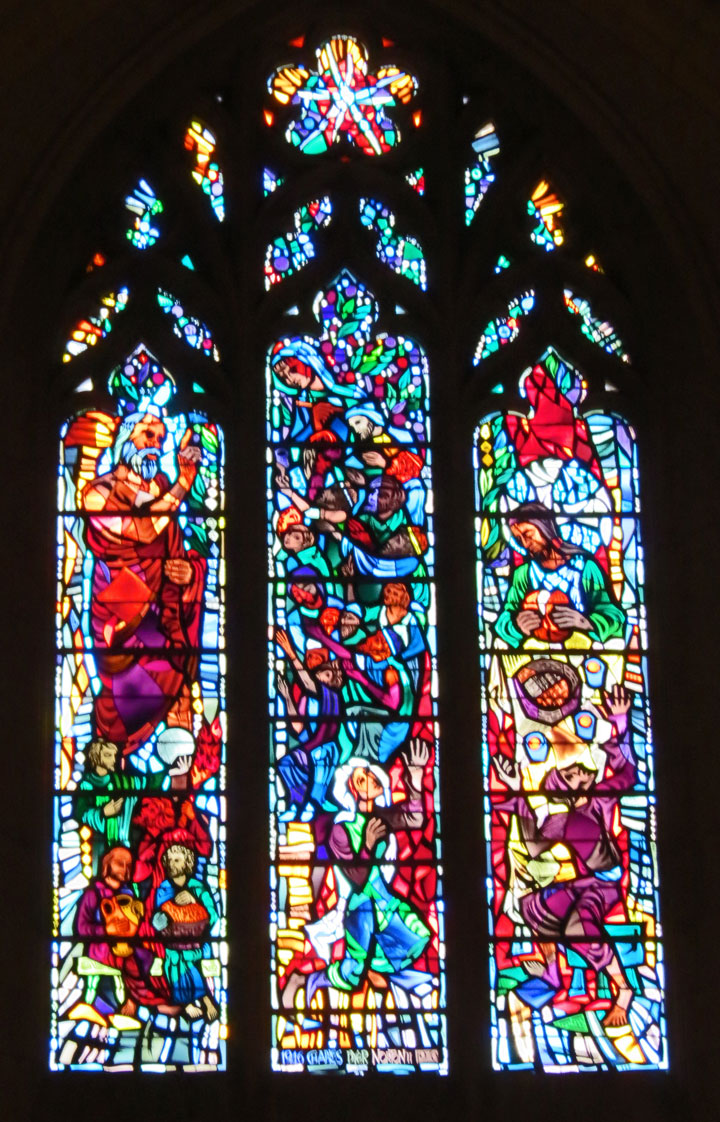
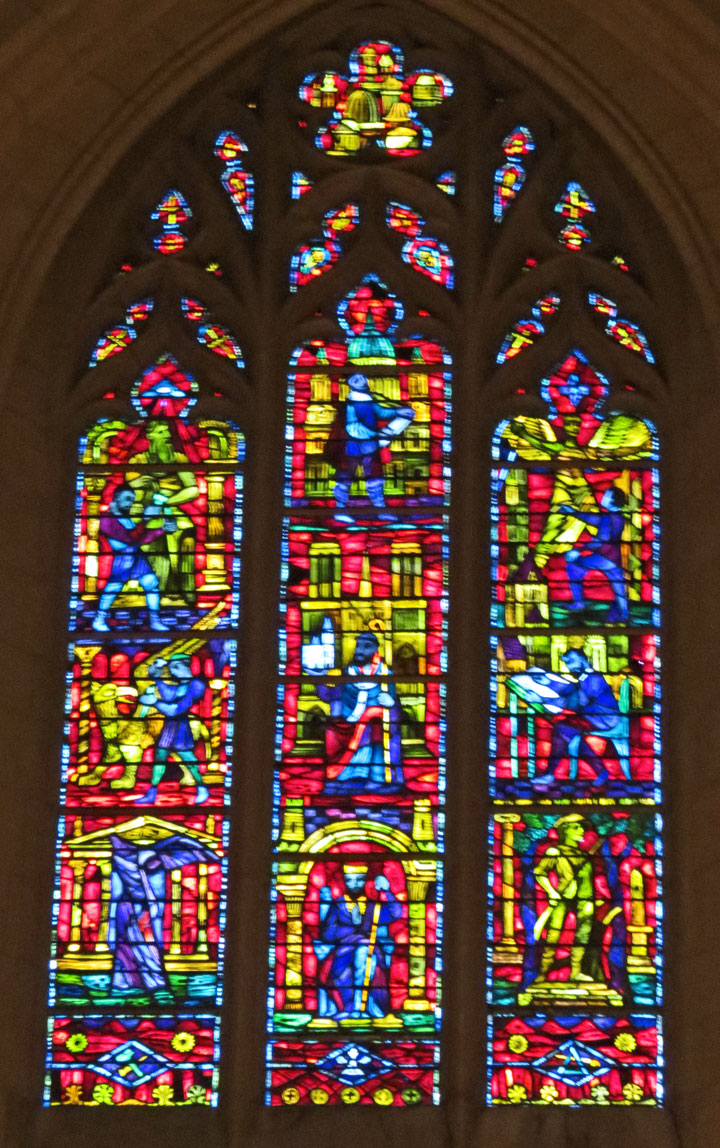
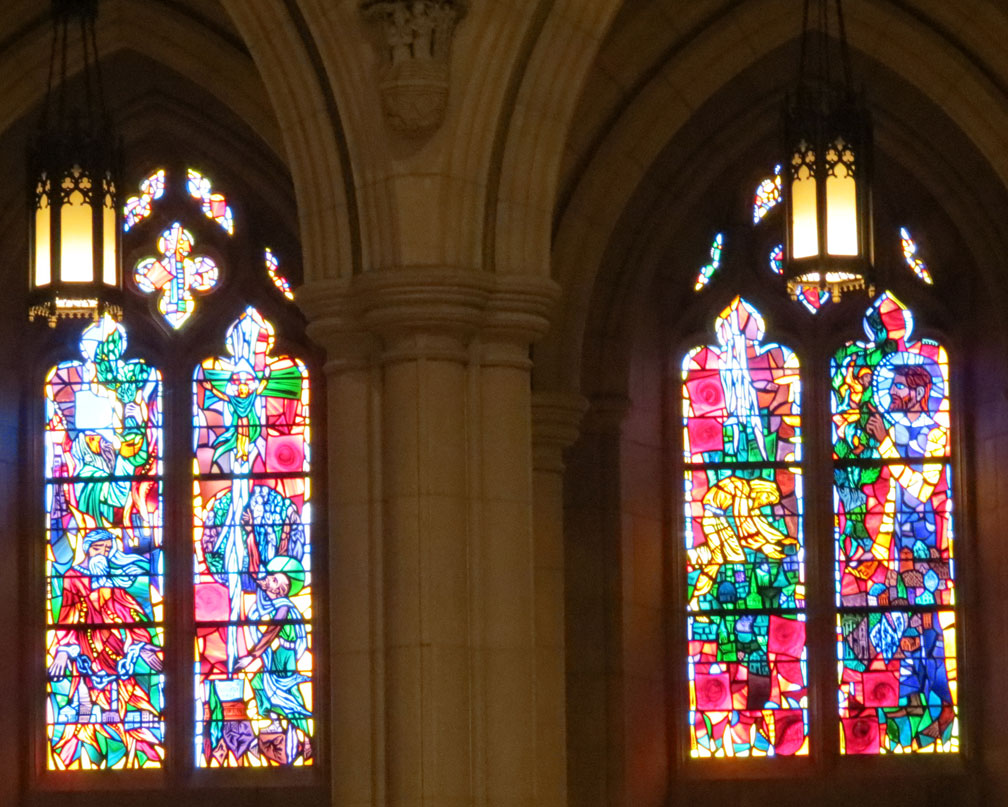

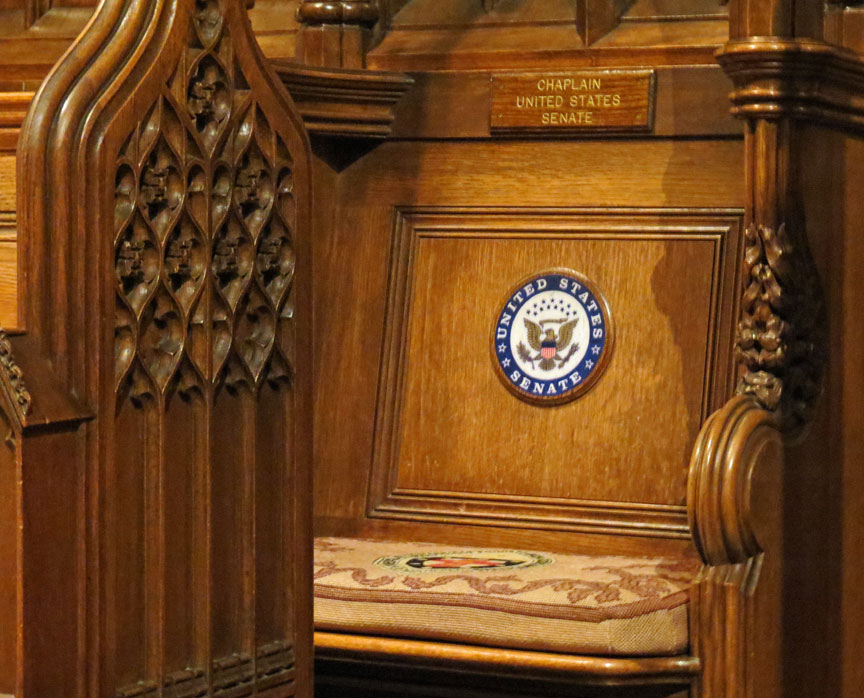
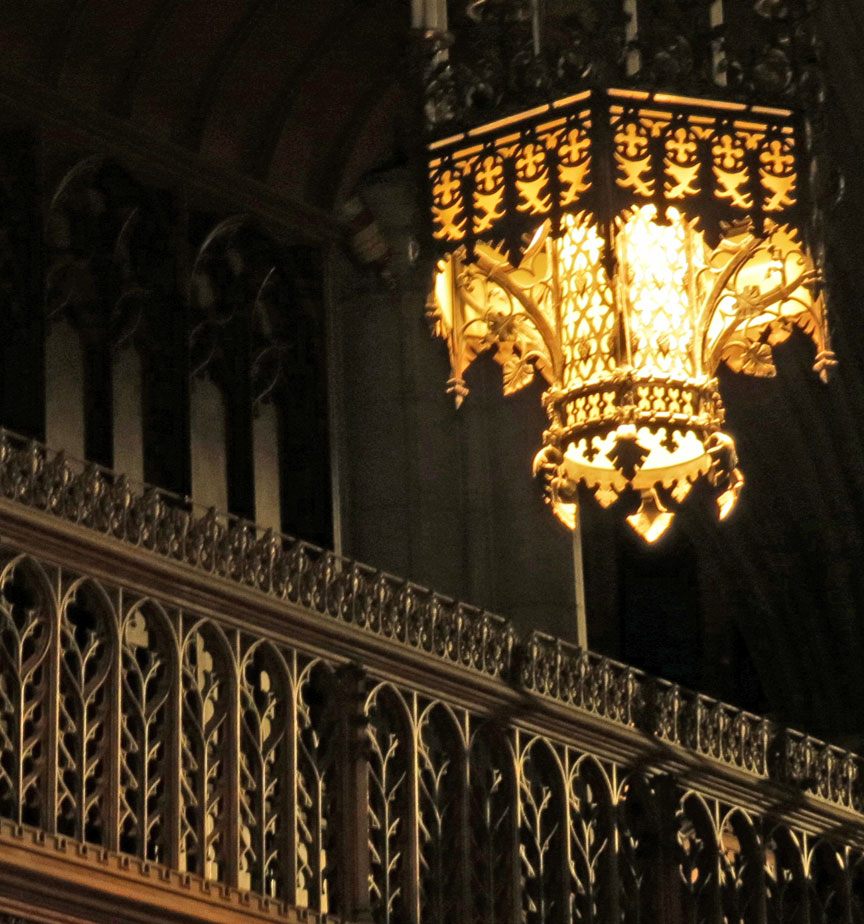

Lamb of God
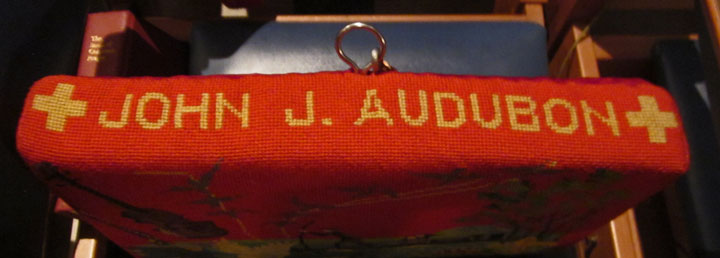
seat cushion
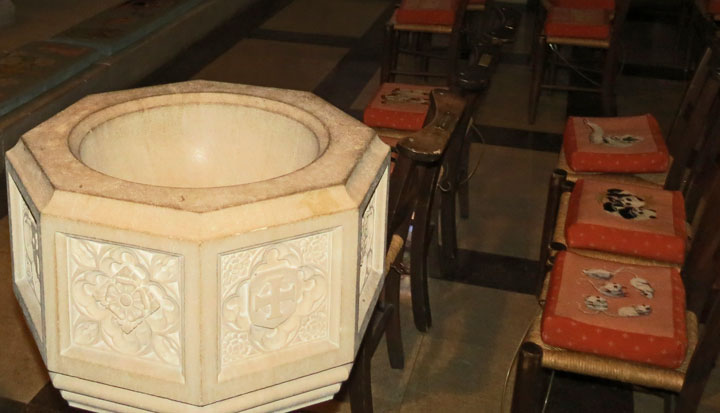
baptismal font
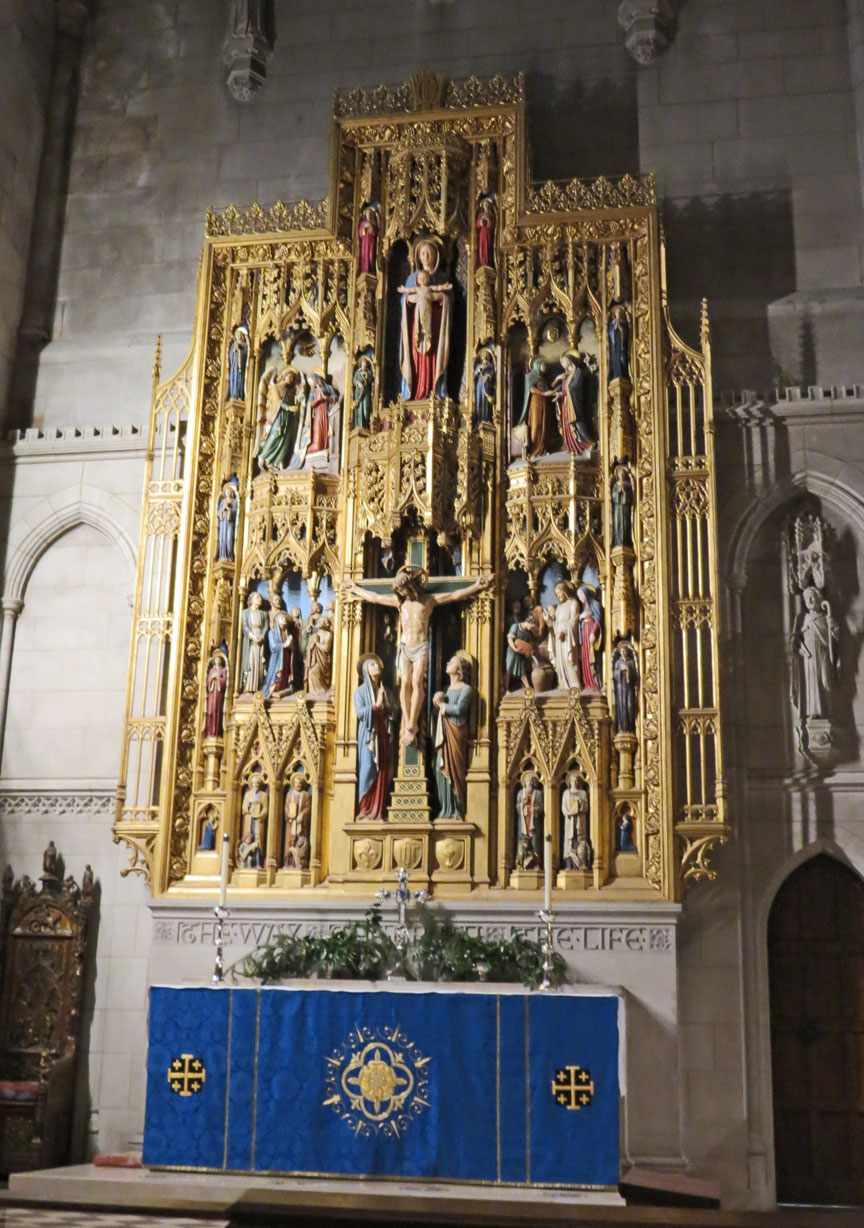
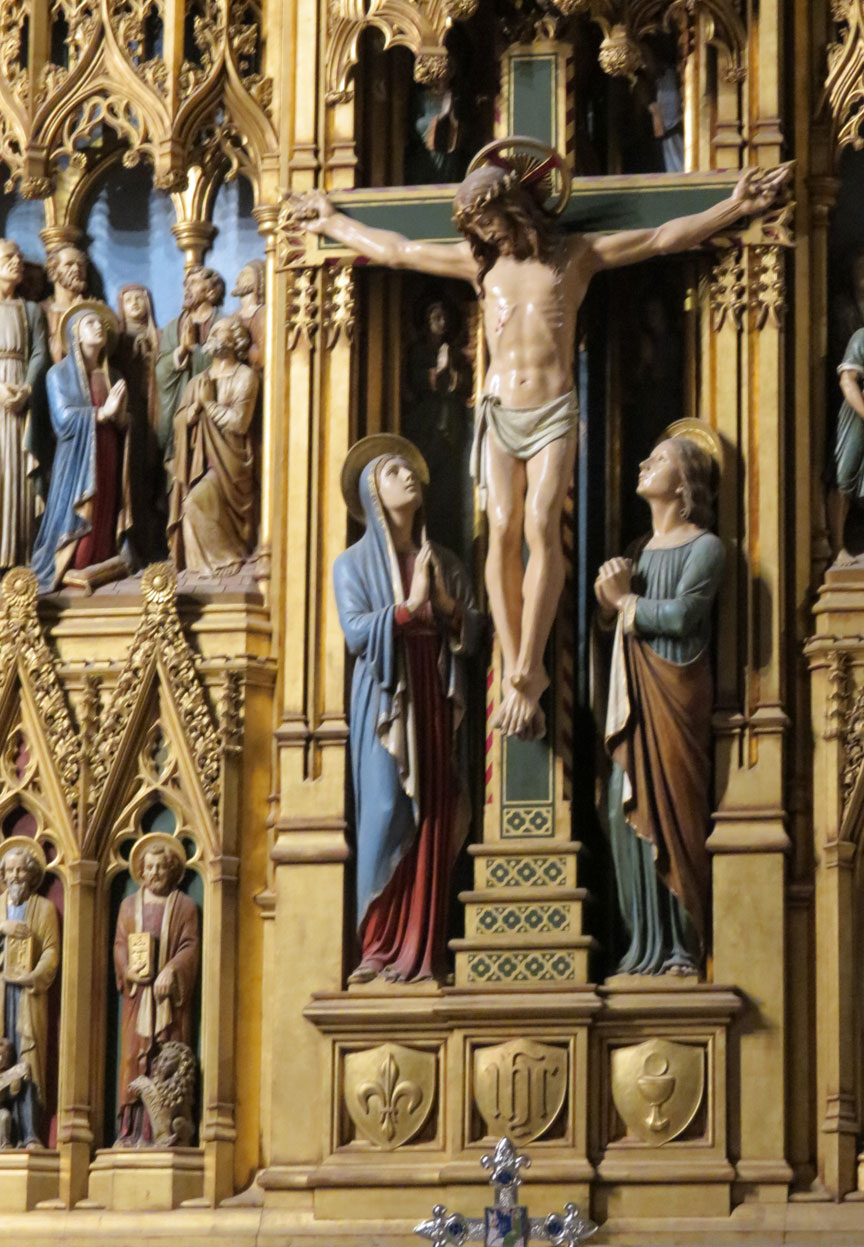
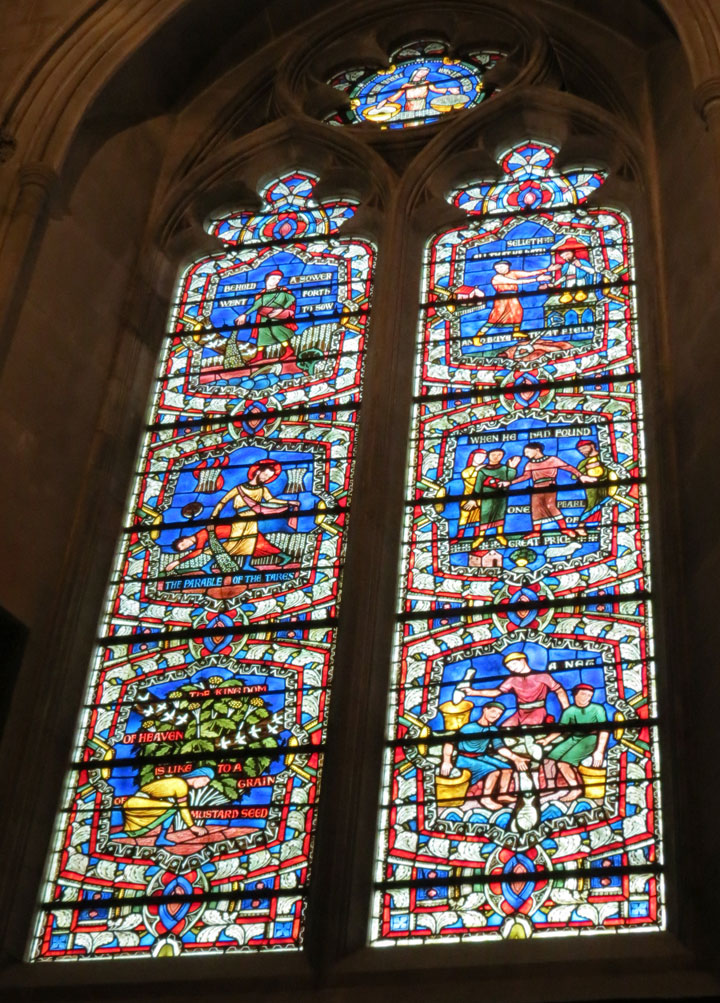
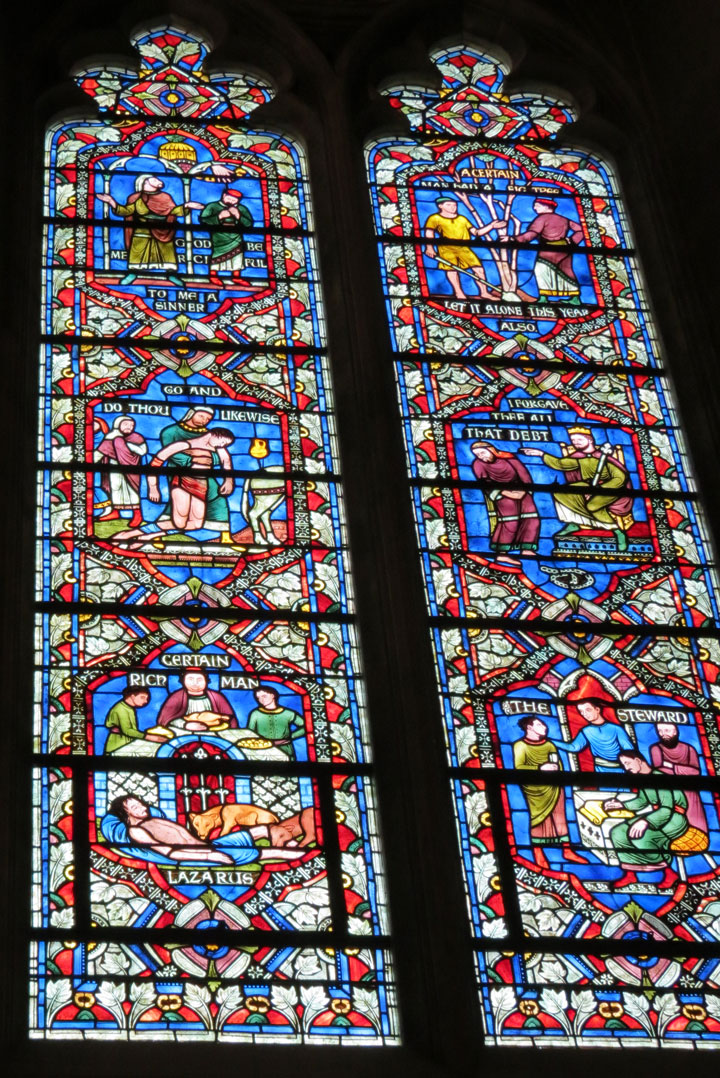
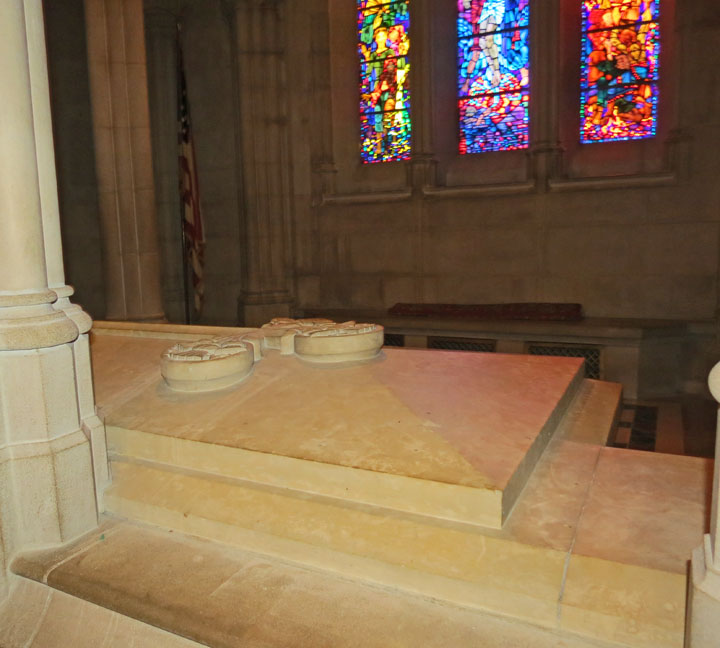
grave of Woodrow Wilson
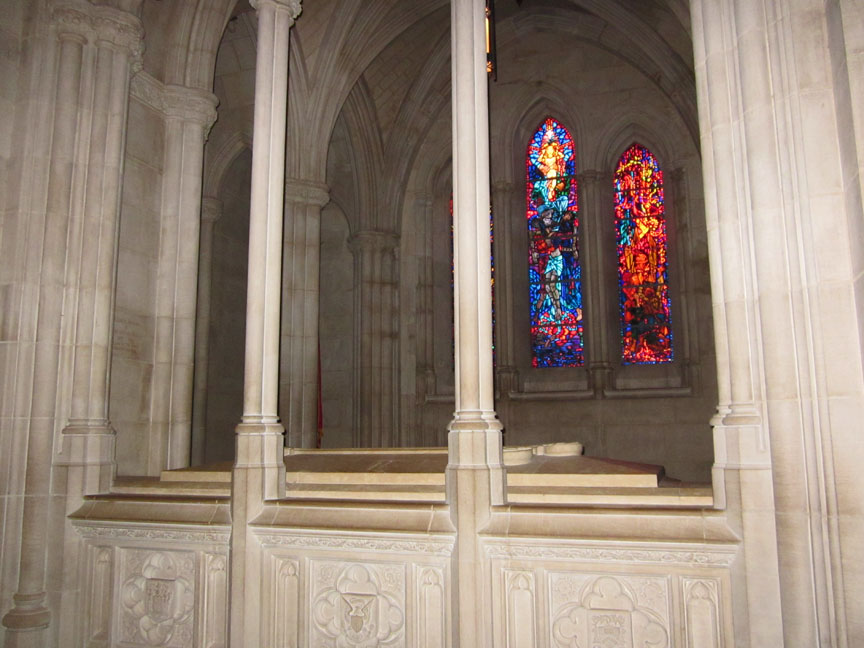
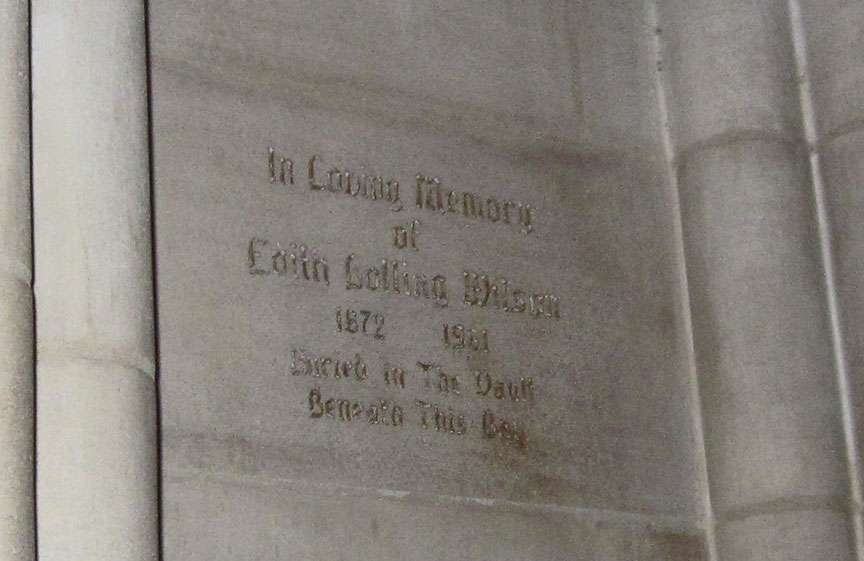
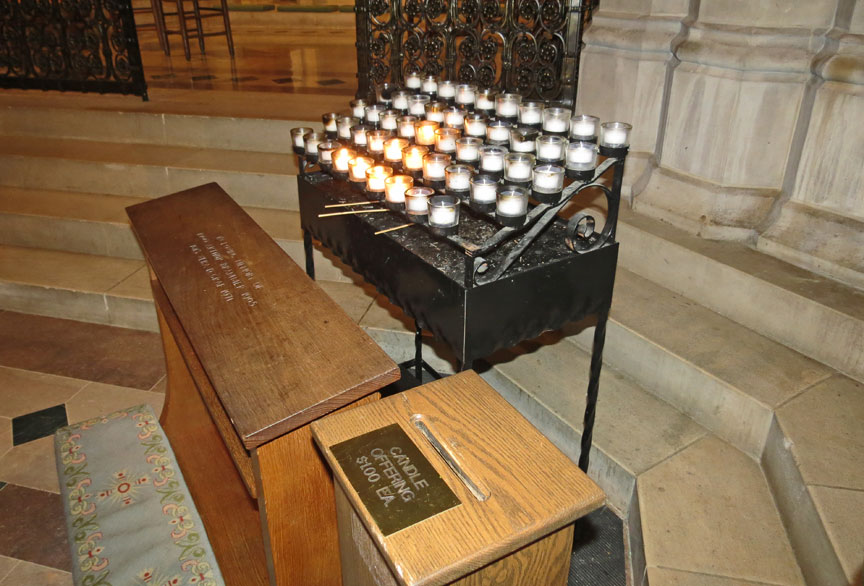
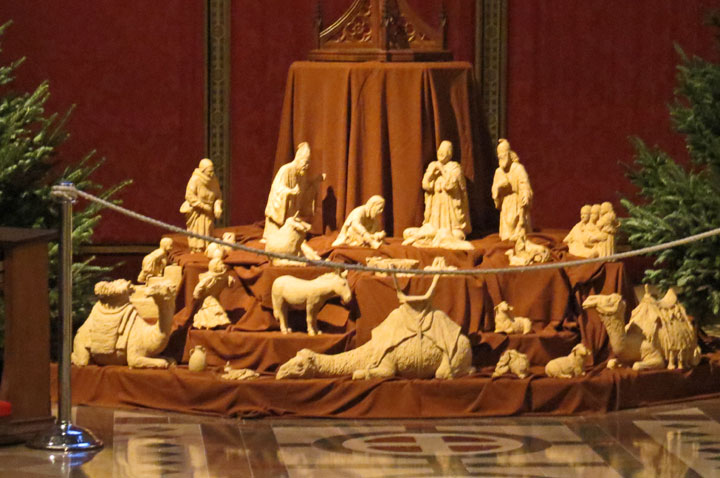
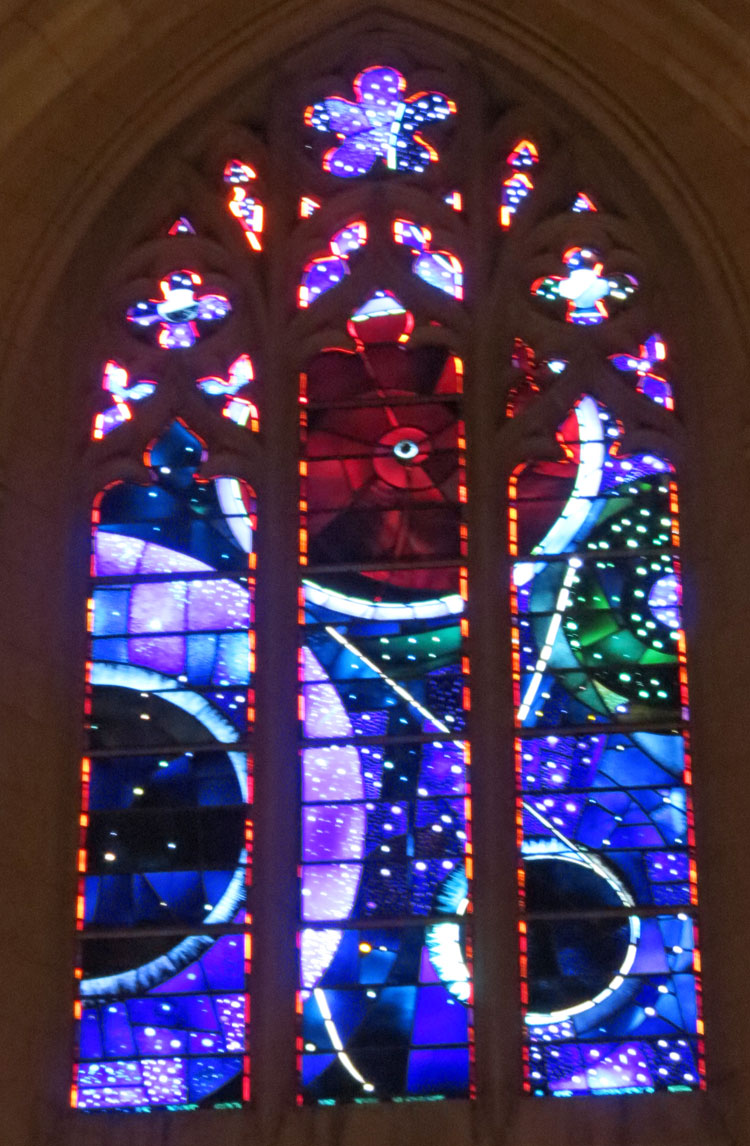
space age window
